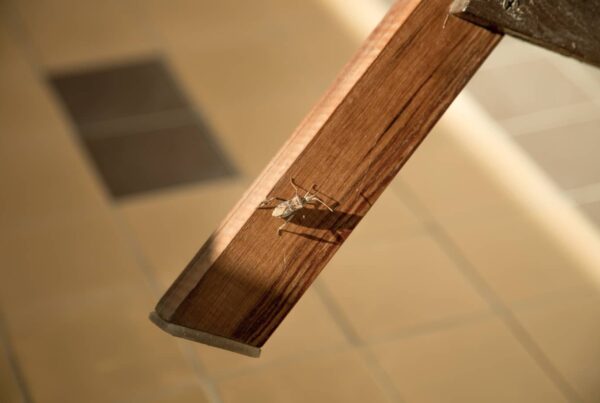
When you’re painting walls, the last thing you want is to deal with paint splatters and spills on your floors. Whether you have hardwood, carpet, tile, or laminate, taking the right precautions can save you from permanent stains and expensive repairs. Learning how to protect floors when painting walls is an essential step in any DIY painting project.
With a little preparation, you can keep your floors clean and free from damage.
Gather the Right Materials
Before you start painting, make sure you have the right supplies to protect your floors effectively. The best materials depend on the type of flooring you have, but here are the essentials:
- Drop cloths: Canvas, plastic, or paper drop cloths provide a strong barrier against spills.
- Painter’s tape: Secures protective materials in place and prevents paint from seeping underneath.
- Rosin paper: A great option for hardwood floors, creating a slip-resistant and absorbent barrier.
- Plastic sheeting: Works well for covering carpets and tiles, preventing paint from soaking through.
- Old sheets or blankets: Useful for quick protection but less secure than drop cloths or plastic.
- Masking film: Lightweight and ideal for covering small areas near baseboards.
Having these materials on hand ensures you’re prepared to protect floors when painting walls, no matter what type of surface you’re working with.

Choosing the Right Floor Protection
Different types of flooring require different protection strategies. Here’s what works best for each type:
For Hardwood & Laminate Floors: Canvas drop cloths are the best choice because they absorb paint without slipping. Unlike plastic, they won’t create a slick surface. Secure the edges with painter’s tape to keep them in place. Avoid plastic sheeting on wood floors, as it can trap moisture and cause damage.
For Carpeted Floors: Carpets can quickly absorb paint, making spills difficult to clean. Use thick plastic sheeting or rosin paper to prevent paint from seeping through. Make sure to tape the edges along the baseboards for complete coverage. Double-layering can provide extra protection in high-traffic areas.
For Tile & Vinyl Floors: Since these floors are easy to clean, plastic sheeting or rosin paper is an effective solution. However, avoid using cloth drop cloths, as they can shift easily, leaving your floors exposed. Tape down all edges to prevent movement while you work.
How to Secure Floor Coverings
To protect floors when painting walls, it’s not enough to just lay down protective materials—you need to secure them properly. If drop cloths or plastic sheeting move while you’re working, paint can seep through or get tracked onto other surfaces.
- Lay down protective materials carefully: Cover the entire floor area, extending at least a foot beyond where you will be painting.
- Use painter’s tape to hold coverings in place: This is especially important for plastic sheeting and rosin paper, which can shift easily.
- Overlap sheets for full coverage: Gaps between protective materials can allow paint to reach the floor, so make sure all pieces overlap slightly.
- Check for movement as you work: If a covering shifts, stop and readjust it before continuing.

Preventing Paint Drips and Spills
Even with the best floor protection, paint can still find its way onto surfaces if you’re not careful. To minimize the risk of drips and spills, follow these best practices:
- Use a paint tray with a liner: This reduces the chance of spilling excess paint.
- Don’t overload your brush or roller: Too much paint can cause drips that end up on the floor.
- Work in small sections: This helps maintain control over your painting tools.
- Keep a damp cloth or paper towels nearby: If you do spill, quick cleanup prevents stains from setting.
Being mindful of these habits while painting can make a big difference in keeping your floors clean. When you protect floors when painting walls with careful application techniques, you reduce the risk of accidents.
Cleaning Up After Painting
Once the paint is dry, it’s time to remove the protective materials. This step is just as important as setup because improper removal can still lead to paint transferring onto your floors.
- Wait until the paint is fully dry: Removing coverings too soon can cause wet paint to drip onto the floor.
- Carefully roll up plastic or paper coverings: Start from one end and roll slowly to avoid spreading any remaining paint.
- Inspect the floors for spills: Even with precautions, small drips can happen. Wipe them up immediately with warm water and mild soap.
- Vacuum or sweep the area: This helps remove any dust or debris that may have gathered under the coverings.
By following these steps, you ensure that your floors remain spotless after your painting project is complete. Proper cleanup is the final step in learning how to protect floors when painting walls.
Additional Tips for a Stress-Free Painting Project
To make your painting experience as smooth as possible, consider these additional tips:
- Use painter’s tape along baseboards: This creates an extra layer of protection where drips are most likely to occur.
- Plan your painting project for a dry day: High humidity can cause paint to take longer to dry, increasing the risk of accidental smudges.
- Use an extendable roller handle: This helps you reach high areas without stepping in wet paint or knocking over supplies.
- Wear shoe covers or old socks: If you accidentally step in wet paint, this prevents it from spreading across your home.
Taking these extra steps will not only help protect floors when painting walls but also make the entire process more efficient and hassle-free.
Final Thoughts
Painting can be a messy job, but with the right preparation, you can keep your floors safe from drips and spills. Whether you’re working with hardwood, carpet, or tile, taking a few extra minutes to lay down drop cloths, secure edges with tape, and use careful painting techniques can save you from hours of cleanup. When you protect floors when painting walls, you not only preserve your home’s appearance but also prevent costly damage.
If you’re planning a home improvement project, it’s also a great time to schedule a home inspection. Small issues like flooring damage, water leaks, or ventilation problems can be caught early before they turn into major repairs. Contact us today to ensure your home stays in top shape before and after your renovations!


